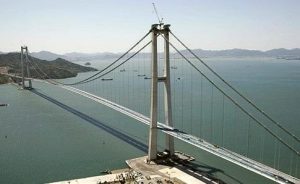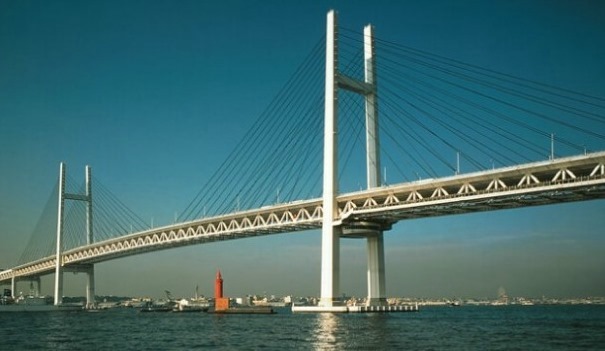Cable Structure
what is cable structure?
A cable structure can be defined as a structure in which a cable or cable system is used as a structural element to withstand the initial load. Cable means any structural element whose diameter is very small in relation to its length.
If we consider the cross section of a cable, the stress is the same throughout the cross section. This type of stress is called net stress. One of the reasons for the high efficiency of these structures is the net tensile stress. One of the disadvantages of cable structures is the problem of vibration due to wind and earthquake. This problem occurs due to the lightness of the structures against lateral stresses such as wind.
Cable structures are divided into two general categories: cable-stayed bridges and cable-stayed roofs.
types of cable structure?
Suspension Cable Bridges
The first category of cable-stayed bridges are suspension bridges. In suspension bridges, the main cable runs in a sloping or curved manner. The main problem with suspension bridges is winding. Truss decks or aerodynamic decks are used to combat torsion. The use of these decks makes it resistant to wind currents.

Cable Stayed Bridges
The second category of cable bridges are cable-stayed bridges. In these bridges, the cables are connected directly and linearly to the deck. These bridges are divided into two types based on arrangement: harp design and fan design. In harpcable-stayed bridges, the cables are installed in parallel, and in wind-driven cable-stayed bridges, they are connected at one point, and tension occurs at that point.


Single curved cable roofs
The first category of cable roofs are single-curved roofs. The main problem with these ceilings is vibration. Which is caused by lateral forces such as wind. Methods to deal with vibration in these structures have been proposed.
- Increasing dead load or heavier structures
- Stiffening of the structure through construction as reverse arc or prestressing (prestressing means creating initial tension in the cable)
- extension in reverse curvature unlike cable
- Connection with braced transverse cables
Double curved cable roofs
The next category of cable roofs are double-curved roofs. double-curved structures have a positive curvature in one direction and a negative curvature in the other. These structures are also called double curves or cable networks.
Cable net structure
This structure is an example of a tensile structure, that is, a structure that is stabilized by tension instead of compression. These structures were developed and popularized as a minimalist structural system by Frei Otto, and were first performed at the 1972 Munich Olympic Stadium.

In these structures, to increase the height and load capacity, horizontal cables are combined with vertical cables. Cable networks can be very simple structures. To increase the beauty and widen the possibility, they can be integrated with adjacent structures to reduce the need for conventional supports.
In cable construction, typically, the cables are locked at their intersections using a special clamp. Complex hydraulic jack processes can then be used to pre-stress the cable.
Alusys Company is the manufacturer of cable structures in Iran and middle east. For more information and advice, you can refer to our contact page.
